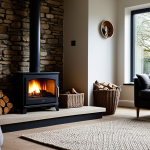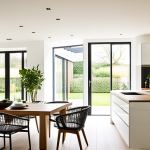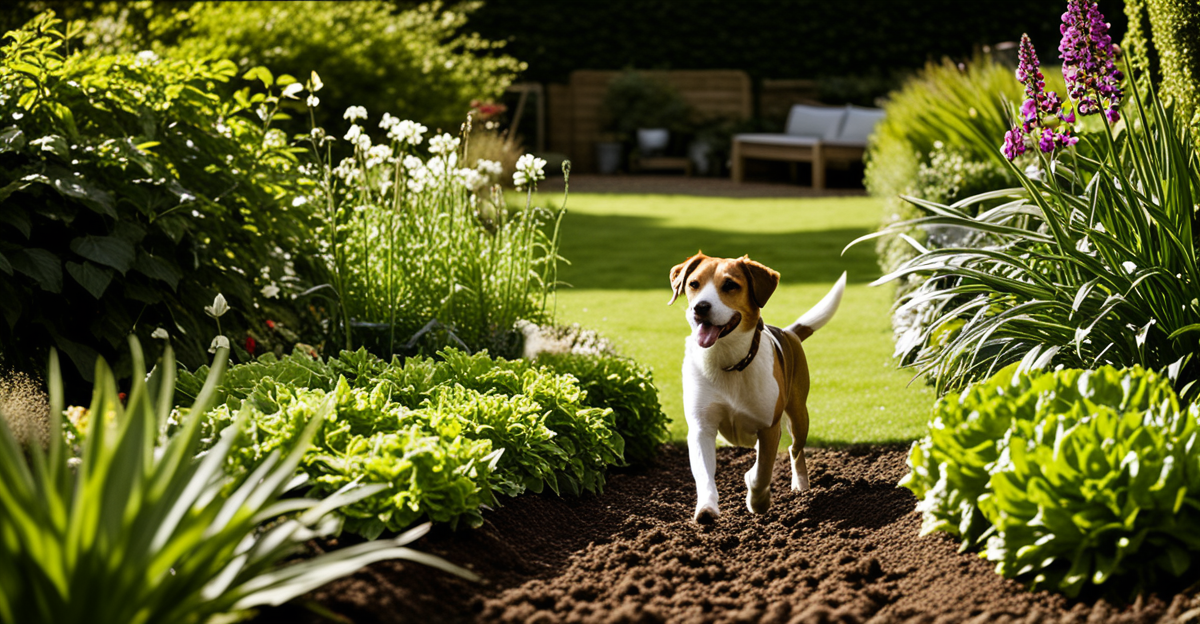Essential Elements of a Pet-Friendly Garden
Creating a pet-friendly garden requires thoughtful design focusing on safety, comfort, and enrichment for your animals. The foundation of a safe garden for pets includes ensuring hazards like toxic plants or sharp objects are removed. In the UK, pet owners should account for weather and wildlife while fostering a welcoming outdoor space that encourages play and relaxation.
For dogs and cats alike, gardens need zones where they can engage in natural behaviours safely. Dogs benefit from areas for digging and running, with durable grass or soil types that withstand wear. Cats, on the other hand, appreciate climbing opportunities and quiet spaces for rest. Incorporating shaded spots protects pets from the variable UK weather, sustaining comfort throughout the seasons.
Also read : How can you adopt a pet from a UK shelter?
Beyond physical safety, mental stimulation helps prevent boredom-related behaviour like digging or chewing. Elements such as pet-safe tunnels, textured ground covers, or scent plants can enrich the environment. Considering each pet’s unique preferences and needs is crucial; for instance, providing elevated platforms for cats or open lawns for active dogs.
Ultimately, a carefully planned pet-friendly garden blends practical UK pet garden essentials with enriching features, ensuring a secure and comfortable outdoor haven.
Also read : How Can UK Pet Owners More Responsibly Select the Right Pet Care Products?
Choosing Pet-Safe Plants and Avoiding Toxic Varieties
Selecting pet-safe plants is a cornerstone of creating a truly pet-friendly garden. In the UK, many popular garden plants can be toxic to pets, making awareness essential. Common toxic plants for pets include foxgloves, lilies, and rhododendrons, which can cause serious health issues if ingested. It’s critical to identify these and remove them from your garden to ensure a safe garden for pets.
Instead, opt for UK garden plants that are non-toxic yet appealing. Examples include lavender, rosemary, and sunflowers—plants that provide sensory enrichment without risk. Selecting shrubs and flowers that are both hardy and safe simplifies maintenance while keeping your garden attractive and secure.
To avoid accidental poisonings, always cross-reference new plants with reliable lists of toxic plants for pets. Consider planting in raised beds or contained areas if you’re unsure about a species. Incorporating pet-safe plants not only protects your pets’ health but also supports their enjoyment, contributing to a relaxing and interactive outdoor space. Prioritising these choices aligns well with UK pet garden essentials, ensuring your garden remains a haven for all family members.
Essential Elements of a Pet-Friendly Garden
Designing a pet-friendly garden demands balancing safety, comfort, and engagement tailored to your pet’s needs. To create a safe garden for pets, begin by eliminating hazards such as toxic plants, sharp edges, and unstable structures. Incorporating durable surfaces like tough grass or compacted soil provides resilient footing, especially necessary for active dogs who enjoy running and digging.
Comfort in a garden is equally vital. Ample shaded areas safeguard pets from the variable UK weather, preventing heat stress during warmer months while offering shelter from rain or cold winds. These shaded zones double as restful retreats for cats, who also benefit from elevated platforms or quiet corners where they can observe their environment peacefully.
A successful UK pet garden essential includes dedicated zones for play and relaxation. Consider including agility equipment or tunnels that encourage physical activity, stimulating both dogs and cats mentally and physically. Textured surfaces and pet-friendly scent plants further enrich the space, catering to sensory exploration and reducing boredom-induced behaviours. By understanding and adapting to your pets’ preferences, your garden becomes a secure, enjoyable sanctuary suited to all your furry family members.
Essential Elements of a Pet-Friendly Garden
Creating a pet-friendly garden demands careful attention to both safety and comfort while fostering spaces that encourage natural behaviours for pets. A safe garden for pets must address risks such as escape routes and injury hazards, balancing resilient surfaces with soft areas where pets can relax or play.
Dogs require open areas with durable ground coverings to withstand running and digging. Including designated digging zones helps redirect destructive paws, preserving other parts of your garden. For cats, vertical spaces like platforms or sheltered hideaways enhance their comfort and satisfy climbing instincts, important for mental stimulation and security.
Incorporating UK pet garden essentials means providing shelter from the country’s variable weather. Shaded areas protect pets from sun and offer relief during rain or cold spells, essential for year-round usability. Enrichment is vital—installing interactive elements such as tunnels or textured paths supports playful activity and reduces boredom-driven behaviours.
By blending these functional zones—play, rest, and exploration—your garden becomes a balanced environment. This thoughtful design encourages healthy activity while prioritising your pets’ well-being, ensuring your outdoor space truly supports their happiness and safety.
Essential Elements of a Pet-Friendly Garden
Thoughtful design ensures safety, comfort, and enrichment for all pets.
Creating a truly pet-friendly garden means addressing the unique needs of different pets while prioritising a safe garden for pets. For dogs, ample open space with durable ground surfaces offers room to run and dig, essential behaviours that promote physical health and mental stimulation. Providing a designated digging area helps protect other parts of the garden from damage.
Cats require a different approach: vertical elements like raised platforms, sheltered hideouts, and secure climbing structures satisfy their natural instincts. These features reduce stress and encourage exploration without risk.
When considering UK pet garden essentials, weather protection is vital. Thoughtfully placed shaded zones shield pets from sun, rain, and wind, ensuring comfort throughout changing seasons. Soft resting areas and quiet corners allow pets to relax safely.
Incorporating stimulating features such as tunnels, textured pathways, or scent plants promotes engagement and prevents boredom-related actions like chewing or digging in inappropriate spots. These enrichment elements are critical in a pet-friendly garden’s success.
By balancing zones for play, rest, and exploration tailored to each pet’s behaviour, you create an inviting and secure outdoor environment that supports health and happiness year-round.
Essential Elements of a Pet-Friendly Garden
Creating a pet-friendly garden requires a careful balance of safety, comfort, and enrichment tailored to different pets’ needs. A safe garden for pets must address not only hazardous plants and materials but also secure boundaries to prevent escapes. For dogs, durable, open spaces are essential for running, digging, and play, while cats benefit from vertical elements such as climbing structures and secluded resting spots.
Comfort features like shaded areas shield pets from the unpredictable UK weather, helping maintain their well-being year-round. Incorporating UK pet garden essentials means providing designated zones that cater separately to active play and quiet relaxation. These zones can include textured surfaces or scent plants to stimulate natural behaviours and reduce boredom.
Understanding the distinct requirements of dogs and cats allows gardeners to craft multifunctional spaces. For example, creating digging areas for dogs redirects destructive behaviours, while elevated platforms for cats satisfy their climbing instincts. By integrating these elements, a pet-friendly garden enhances both safety and enjoyment, fostering a secure outdoor haven that supports pets’ physical and mental health.
Essential Elements of a Pet-Friendly Garden
Creating a balanced outdoor haven for your pets requires intention and attention.
A pet-friendly garden prioritises both safety and comfort, tailoring spaces to your pets’ distinct needs. To achieve a safe garden for pets, it’s important to incorporate secure boundaries that prevent escapes and keep wildlife out, coupled with durable, weather-resistant surfaces that withstand active use. For dogs, this means providing spacious, robust lawns or soil patches that accommodate running, digging, and play. Designating specific digging zones redirects potentially destructive behaviours without compromising garden aesthetics or plant health.
Cats need carefully considered vertical spaces, such as climbing shelves or sheltered, elevated rest areas. These elements support their natural agility and curiosity while reducing stress. Comfortable shaded retreats protect all pets from the fluctuating UK climate—offering cool shelter in summer and refuge from wind and rain during colder months.
Enrichment is a core component of UK pet garden essentials. Incorporating textured pathways, scent-rich plants safe for pets, and interactive features like tunnels stimulates mental engagement, helping prevent boredom-related damage. By thoughtfully combining play zones, relaxation spots, and secure garden elements, owners create a multifunctional space that nurtures health, safety, and happiness throughout the year.
Essential Elements of a Pet-Friendly Garden
Creating an outdoor space tailored to your pet’s needs is key.
Designing a pet-friendly garden involves prioritising a safe garden for pets while fostering comfort and engagement. Key considerations include secure boundaries to keep pets safe and prevent escape, alongside durable ground surfaces suited to energetic activities. For dogs, robust lawns or soil patches accommodate running and digging, essential outlets for natural behaviours. Creating a designated digging area protects other garden parts from damage while encouraging healthy play.
Cats require elements that support their climbing and resting instincts. Incorporating vertical spaces such as raised platforms or sheltered hideaways satisfies these needs, ensuring mental stimulation and calm refuge. Comfortable shaded areas are crucial to protect pets from the UK’s variable climate, providing shelter in both heat and rain.
To encourage pet play and relaxation, a pet-friendly garden should blend interactive features like tunnels or textured pathways with quiet zones. These elements enrich the environment, reduce boredom, and stimulate natural behaviours. Understanding distinct pet preferences—active zones for dogs, elevated retreats for cats—enables a garden designed for all. Overall, combining these UK pet garden essentials promotes wellbeing and happiness for your pets throughout the year.





